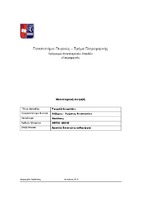Target 2 - Securities

View/
Abstract
Historically, financial market infrastructures in Europe were created to meet the requirements of national financial markets. In most cases, there were one or two dominant players at each stage of the value chain: typically only one stock exchange for trading, possibly one central counterparty (CCP) for clearing and at least one central securities depository (CSD) for settlement. Furthermore, each of these national infrastructures was primarily designed to manage securities that were denominated in the national currency. Today, despite the introduction of the euro over ten years ago, the provision of post-trading service (i.e. clearing and settlement) remains heavily fragmented along national lines. For example, there were still 19 central CSDs operating in the euro area in 2009 and almost 40 in the 27 countries of the European Union (EU). This situation is clearly not optimal for a single currency area or for the EU, as it encourages each country’s financial market to remain domestically-oriented. Investors continue to invest mostly in domestic securities, and as a result the euro area financial markets as a whole cannot fully benefit from the risk diversification and competition benefits that arise from having a single currency. The US was in a very similar position to Europe several decades ago, with a fragmented trading and post-trading infrastructure. The inefficiencies of the US system eventually forced the US government to intervene resulting in a high degree of consolidation. The US now has a very streamlined trading and settlement environment, with the Depository Trust & Clearing Corporation (DTCC), responsible for the clearing and settlement of all equities and corporate bonds, and the Federal Reserve System responsible for government bonds. The EU authorities have so far not resorted to such dramatic steps. The initiatives taken up to now have focused on removing the barriers to competition between national market infrastructures so as to let market forces work their magic. Market forces would determine the optimal market structure, whether this is a single monopoly provider, as in the US, or multiple providers. The two most important initiatives from the European Commission are the “Markets in Financial Instruments Directive” (MiFID) and “Code of Conduct for Clearing and Settlement”. T2S is intended to complement these existing initiatives by boosting competition, increasing price transparency and harmonising existing practices across Europe. Settlement has traditionally been the domain of national CSDs, so it was difficult for a CSD in another country to gain access to these securities. By creating a pan-European platform, T2S aims to break down the barriers between national markets in a way which could not have been achieved by the MiFID or the Code of Conduct on their own.


